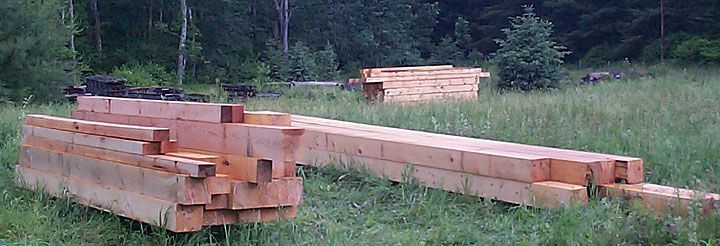
OK, Sure. Wood comes from trees... But that's the short version...

Nice Log; now what?
|
|
 |
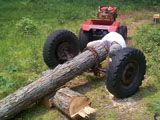
|
If you aren't bringing the sawmill to the log then you'll need to move the log to the mill. This is usually accomplished by lifting the leading edge of the log (or placing it on a skid) and dragging it out with a log skidder, pair of oxen or in our case the GtLS. By putting the leading edge of the log on a rolling frame we are able to move significantly heavy logs with just a 12hp. garden tractor. |
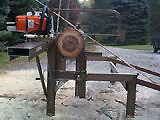
|
This is the Logosol M7 portable sawmill, it's a lightweight (aircraft aluminium) highly adaptable design that has proven to be both precise and accurate, with the fexability to produce specialty cuts. This is the standard (16 foot) M7 with a gas chainsaw as the powerhead; there are several electric powered options including 3 different chainsaws, a bandsaw, and a new log house moulder. |
 |
Other tools for handling logs include the log spinner (top), a unique compact double cant hook that rolls logs up ramps and turns them on the mill. The pickeroon is a portable handle for logs, imbed it in one end of the log and you can lift, drag or rotate. Very handy for smaller logs. |
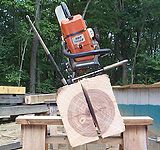
|
Here is another fine Logosol product, the Timberjig. It's an invaluable tool when faced with a large log that is either too short or too heavy for the M7. On the linked page you can see the Timberjig cutting a scarf joint for the sill structure of our house. |
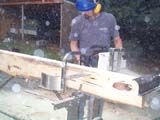
|
Making Sawdust... A couple pictures of the mill in action. |
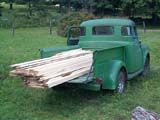
|
The OGD Lumber Transporter |
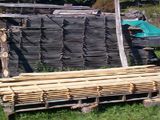
|
Proper stacking and drying of dimensional lumber is the key to maintaining it's shape, structure and appearance. |
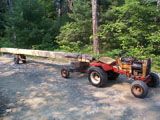
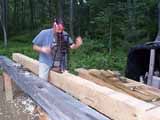
 house links home
house links home